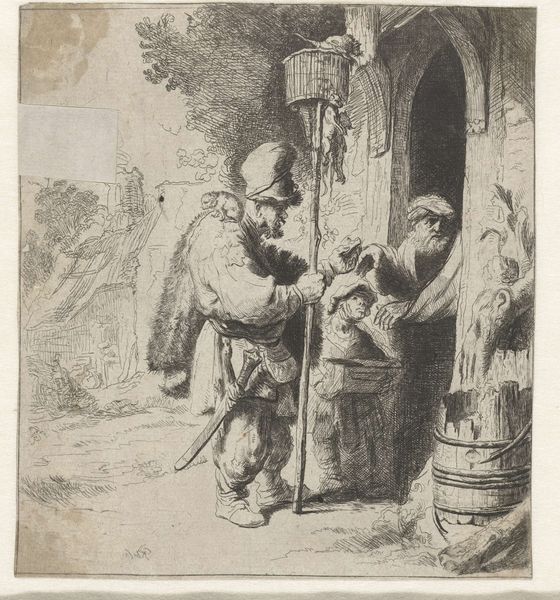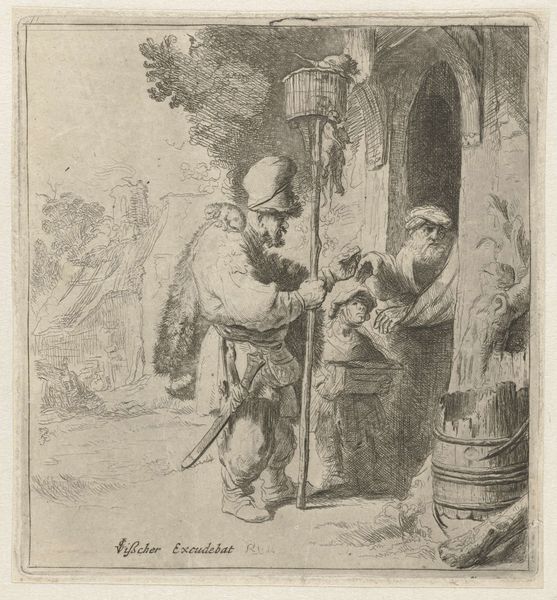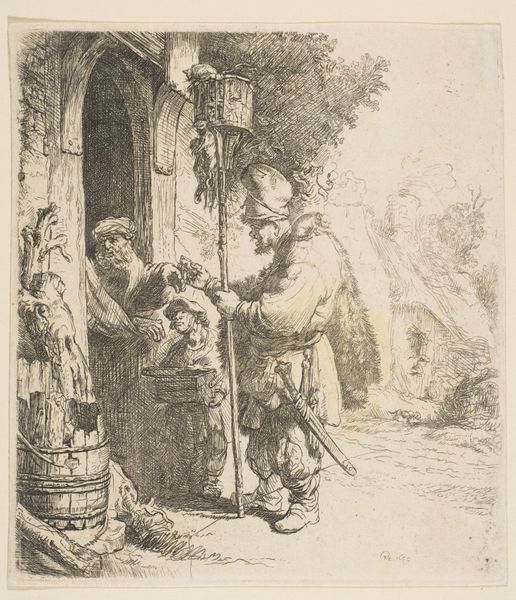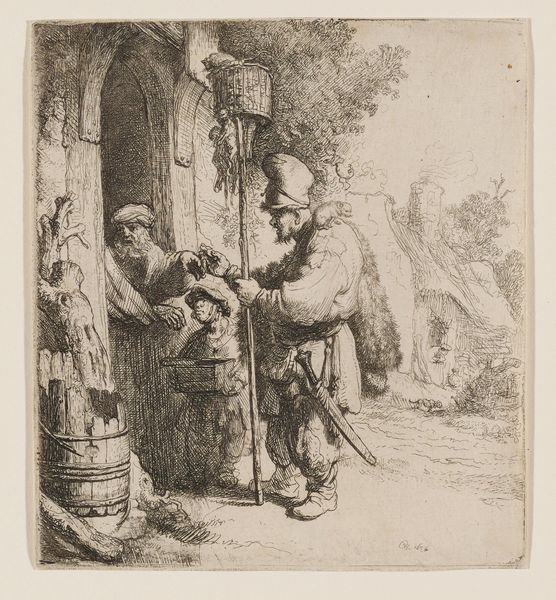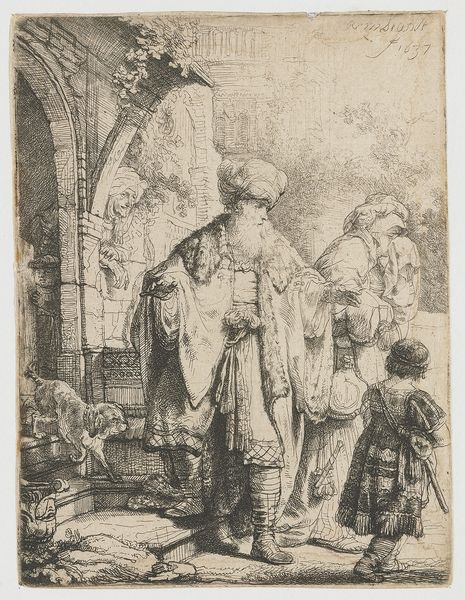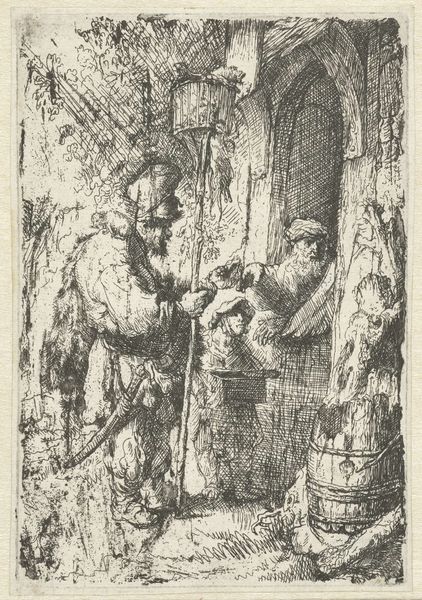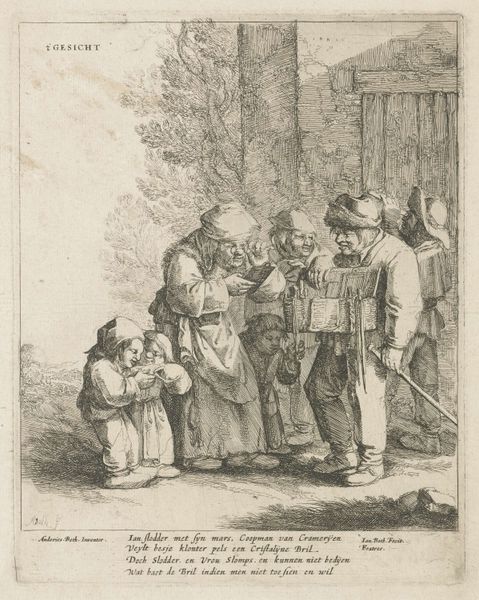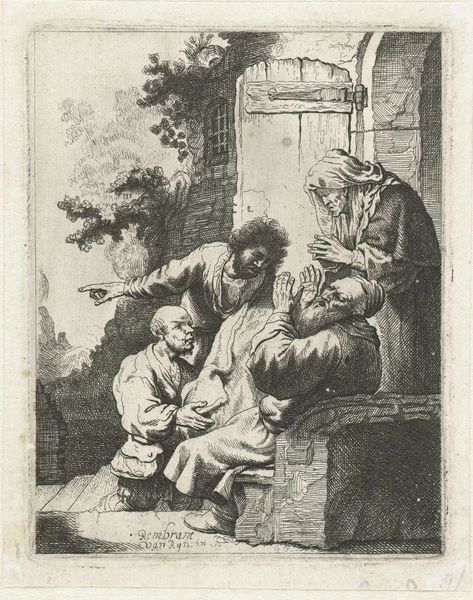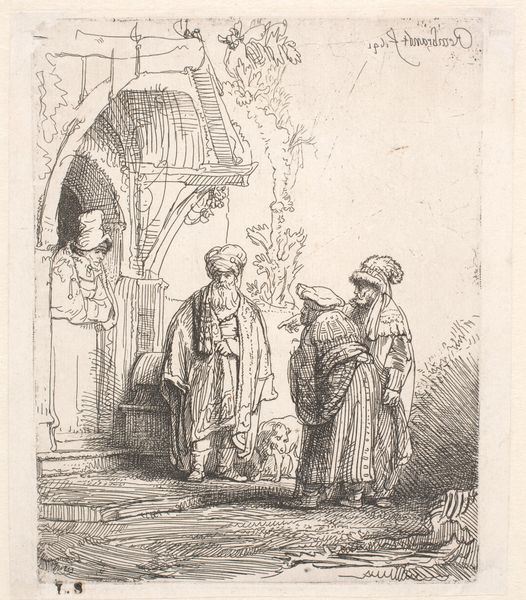
drawing, print, etching, ink, engraving
#
pencil drawn
#
drawing
#
baroque
#
dutch-golden-age
# print
#
etching
#
charcoal drawing
#
figuration
#
ink
#
pencil drawing
#
line
#
genre-painting
#
engraving
#
realism
Dimensions: height 187 mm, width 155 mm
Copyright: Rijks Museum: Open Domain
This etching, The Rat Catcher, likely made in 1632 by an anonymous artist, presents us with a figure of complex symbolism. Note the dead rats hanging as advertisement—a potent symbol across cultures. The rat, historically associated with disease and decay, takes on a new dimension here, becoming a trophy of sorts. We see echoes of this motif in depictions of vanquished beasts, a demonstration of power over nature's perceived evils. The image calls to mind similar symbolic gestures in earlier works, such as the beheading of Medusa, where the severed head becomes a symbol of victory. Just as those images evoke a visceral response, so too does the rat catcher's display. Consider how the collective memory of plagues and pestilence informs our reading of this scene, and how this image triggers deep-seated fears related to disease and death. These cyclical returns of symbols remind us of the past. This image is a psychological exploration into the depths of fear and the human desire to control the uncontrollable.
Comments
No comments
Be the first to comment and join the conversation on the ultimate creative platform.
